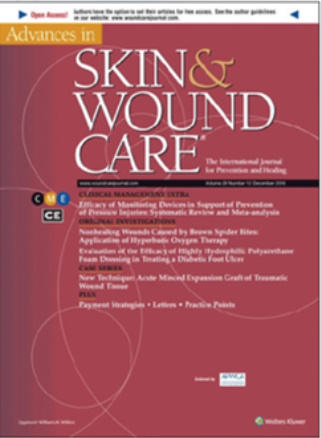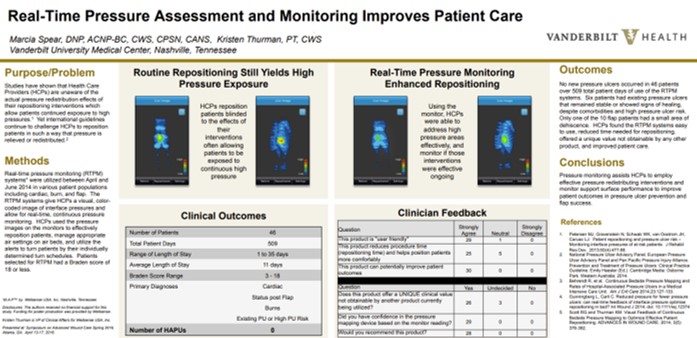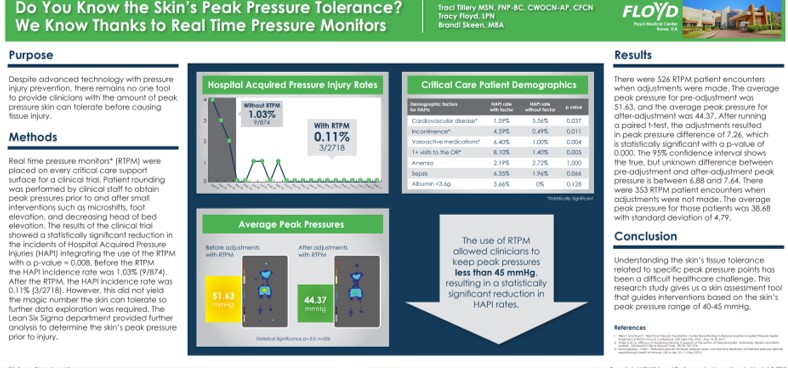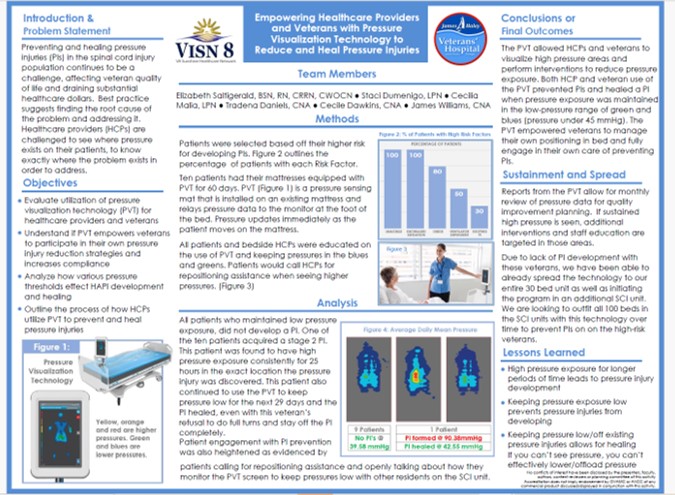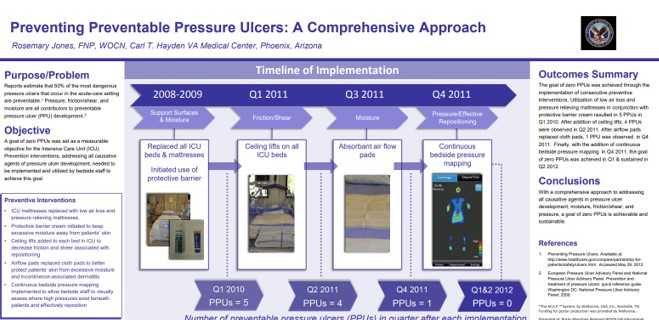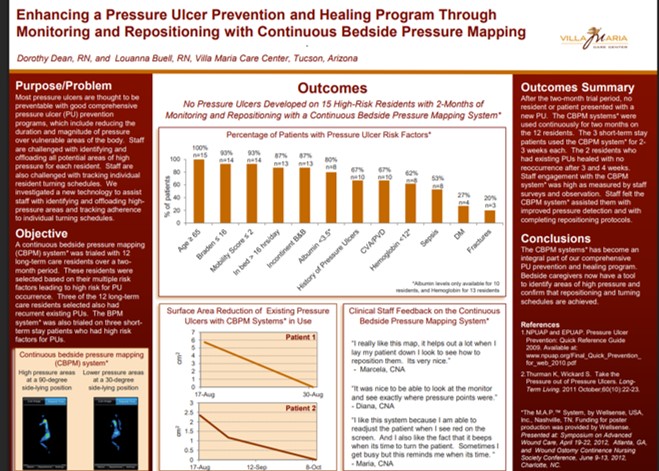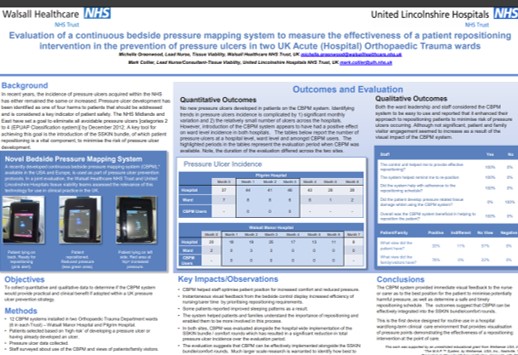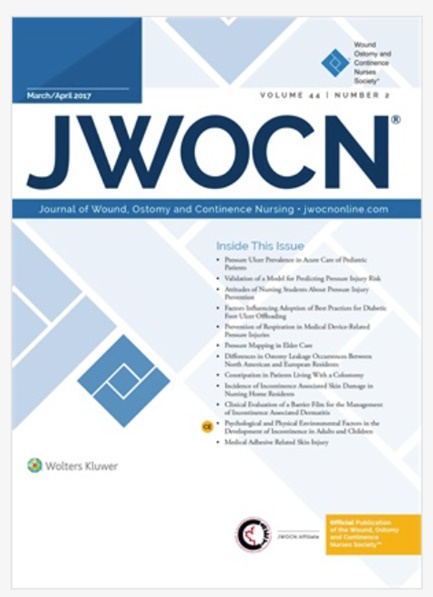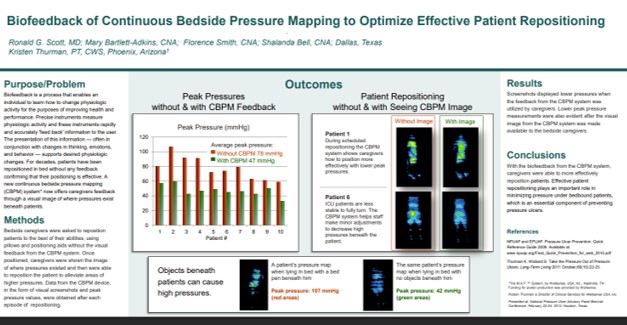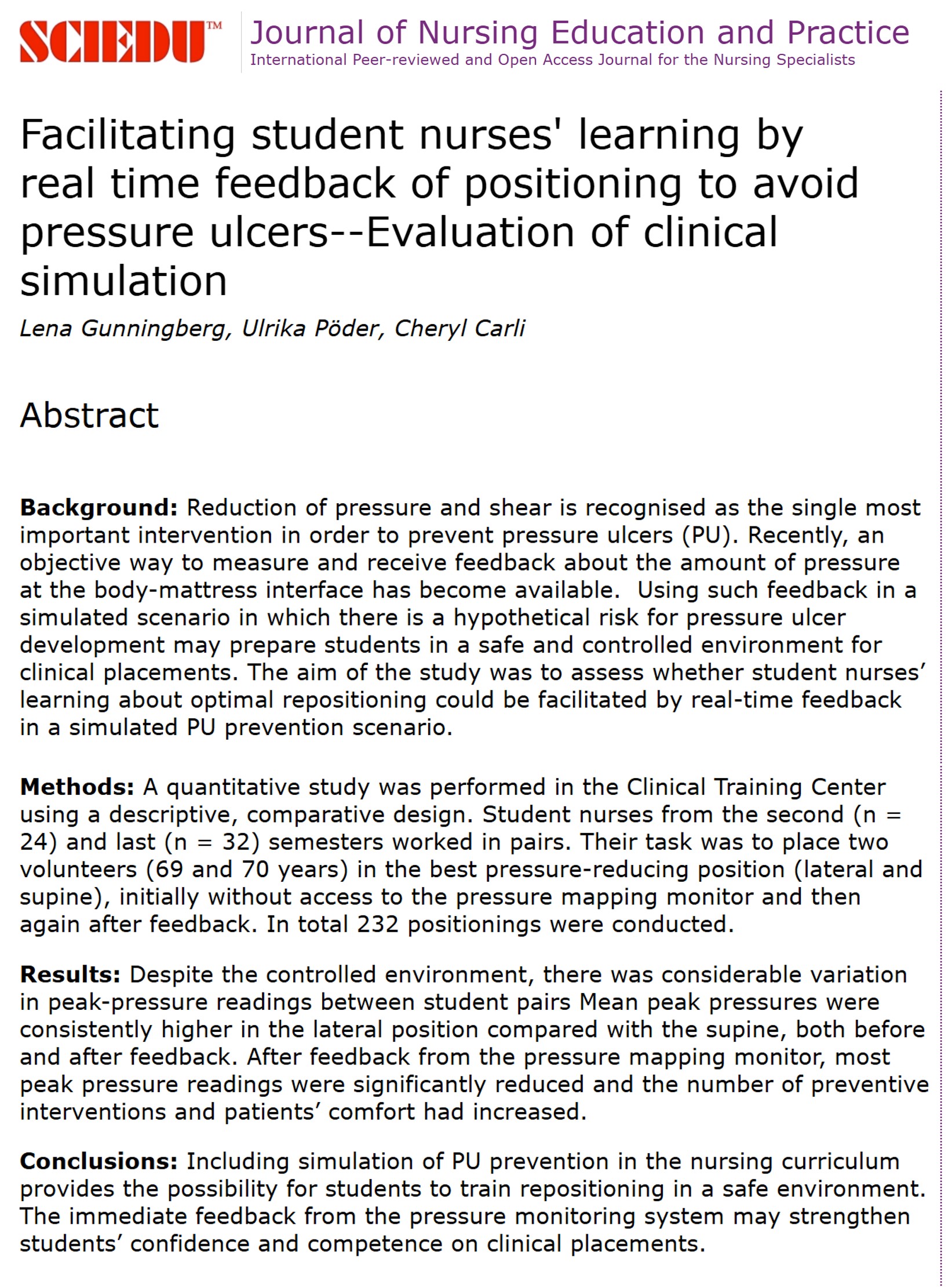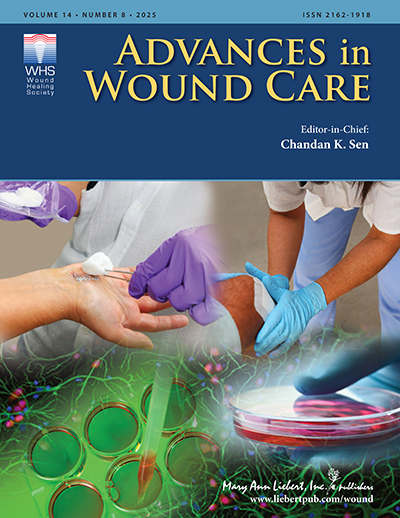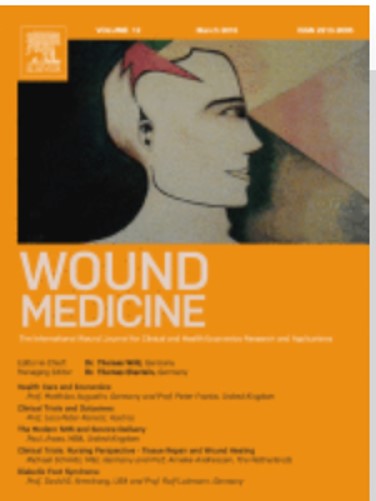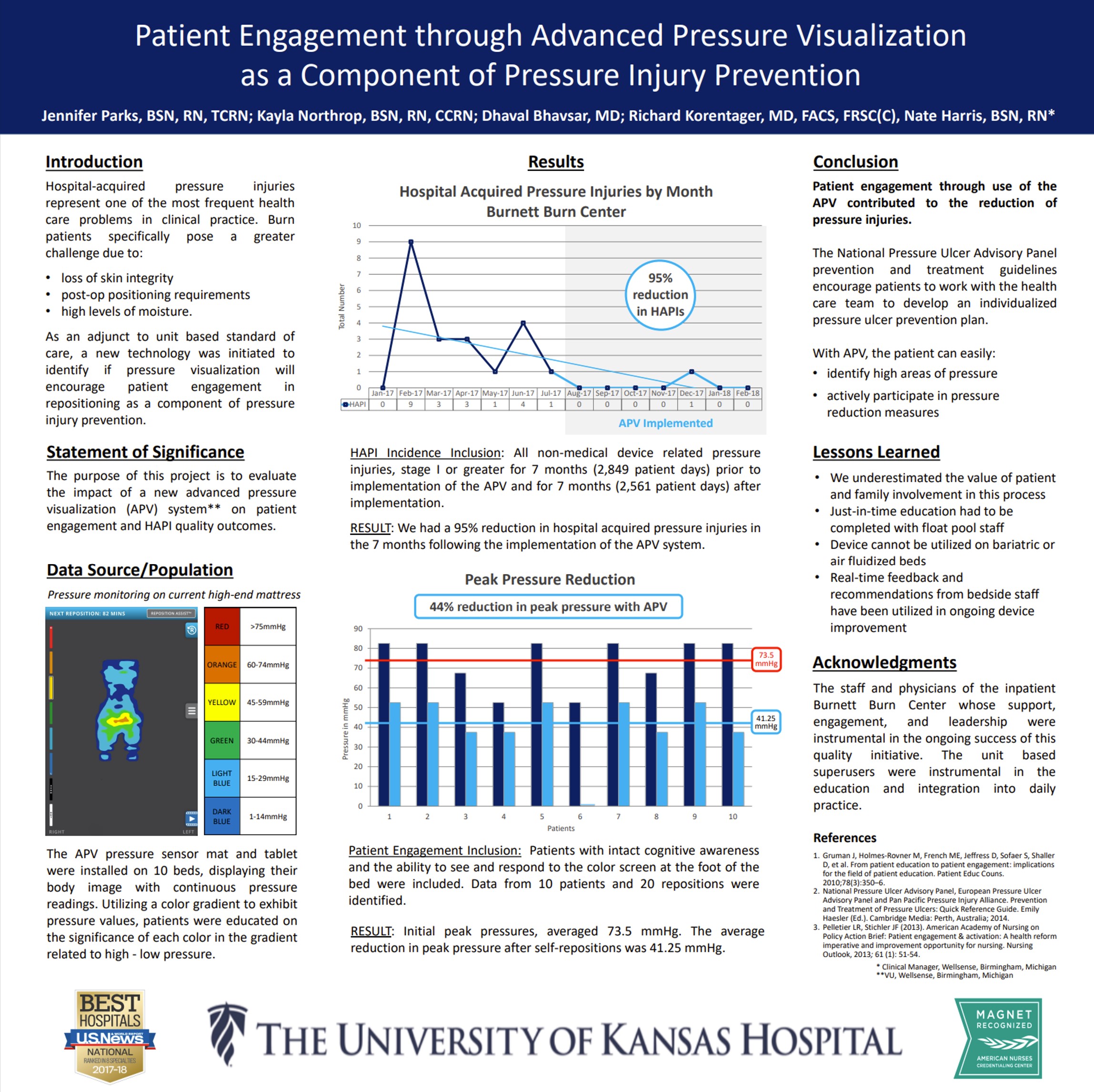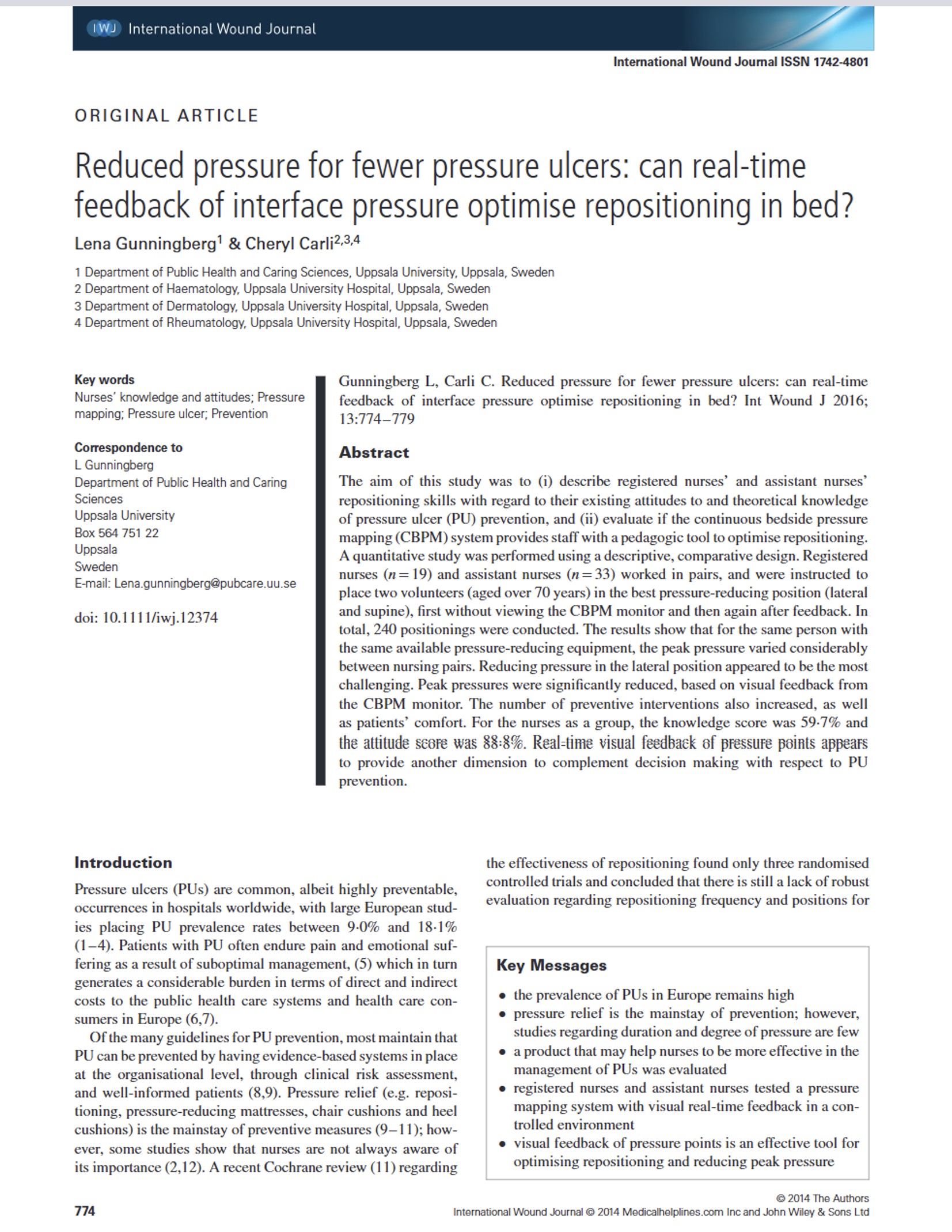Clinical Evidence – Select the category you want to view
Title
Efficacy of Monitoring Devices in Support of Prevention of Pressure Injuries
Key Takeaway/s
Key takeaways – This meta-analysis published in Advances in Skin & Wound Care confirms that real-time pressure monitoring systems can reduce the risk of pressure injuries by up to 88%, demonstrating their effectiveness as a clinical prevention tool. Read Full Article
Title
Key Takeaway/s
At the Johns Hopkins Burn Center, real-time pressure mapping reduced the hospital-acquired pressure injury rate by 44.4%, eliminated full-thickness pressure injuries, and lowered costs by 43.8%, demonstrating significant effectiveness in the burn ICU. Read Full Article
Title
Key Takeaway/s
In a retrospective analysis at Henry Ford Hospital’s medical ICU, continuous bedside pressure mapping reduced pressure ulcer incidence by 94% and was reported by staff to improve repositioning effectiveness, comfort, and adherence to protocols. Read Full Article
Title
Real-Time Pressure Assessment and Monitoring Improves Patient Care
Key Takeaway/s
At Vanderbilt University Medical Center, real-time pressure visualization was used in 46 patients across 509 patient-days, resulting in zero new pressure injuries, high clinician satisfaction, improved repositioning effectiveness and patient comfort. Read Full Article
Title
Real-Time Pressure Visualization Guides Repositioning to Reduce Hospital-Acquired Pressure Injuries
Key Takeaway/s
This real-world clinical poster from Floyd Medical Center shows that using a real-time pressure visualization monitor led to a 71% reduction in hospital-acquired pressure injuries (HAPIs) over 5 months in the critical care unit, by guiding staff to reposition patients more effectively and reduce peak pressure exposures. Read Full Article
Title
Do You Know the Skin’s Peak Pressure Tolerance? We Know Thanks to Real Time Pressure Monitors
Key Takeaway/s
This Floyd Medical Center poster showed that using real-time pressure monitoring reduced hospital-acquired pressure injuries (HAPIs) by nearly 90% and enabled staff to maintain peak pressures below ~45 mmHg, a threshold associated with significantly lower HAPI rates. Read Full Article
Title
Key Takeaway/s
A clinical poster from the James A. Haley Veterans’ Hospital (VISN 8) showed that with pressure visualization technology, 90% of high-risk spinal cord injury patients avoided new pressure injuries, and existing Stage 2 injuries healed when pressure was reduced. Read Full Article
Title
Preventing Preventable Pressure Ulcers: A Comprehensive Approach
Key Takeaway/s
At the Carl T. Hayden VA Medical Center, a stepwise prevention program that included real-time pressure visualization reduced preventable pressure ulcers from 5 per quarter to 0, sustaining zero PPUs across two consecutive quarters Read Full Article
Title
Key Takeaway/s
At Villa Maria Care Center, Continuous Bedside Pressure Mapping over two months prevented all new pressure ulcers in 15 high-risk residents, supported healing of existing ulcers with no recurrence, and became an integral part of the pressure ulcer prevention program. Read Full Article
Title
Key Takeaway/s
At St. Anthony’s Medical Center, Continuous Bedside Pressure Mapping enabled use of lower-cost support surfaces, reducing reliance on specialty rentals and delivering net savings of $19 per patient per day after including the cost of the visualization system itself. Read Full Article
Title
Preventing Preventable Pressure Ulcers: A Comprehensive Approach
Key Takeaway/s
At the Carl T. Hayden VA Medical Center, a stepwise prevention program that included real-time pressure visualization reduced preventable pressure ulcers from 5 per quarter to 0, sustaining zero PPUs across two consecutive quarters Read Full Article
Title
Key Takeaway/s
In two UK NHS hospitals, continuous bedside pressure mapping helped identify and reduce pressure ulcer incidence, with staff reporting 100% agreement that the system improved positioning, reduced risk, and was beneficial in care. Patients and families also responded positively, with 78% rating the system helpful. Read Full Article
Title
Key Takeaway/s
This peer-reviewed study found that when staff repositioned residents using feedback from a real-time pressure mapping system, peak interface pressures were significantly reduced (P = .016) and more preventive interventions were implemented (P = .012), demonstrating that pressure visualization directly improves the effectiveness of repositioning Read Full Article
Title
Biofeedback of Continuous Bedside Pressure Mapping to Optimize Effective Patient Repositioning
Key Takeaway/s
This clinical poster from Vanderbilt University Medical Center showed that real-time pressure visualization reduced median sacral pressure by 63%, with post-intervention pressure at 47 mmHg, a level consistent with very low interface pressure Read Full Article
Title
Key Takeaway/s
With the use of real-time pressure mapping feedback, student nurses were able to significantly reduce interface pressure compared to repositioning without the system, demonstrating its value in teaching effective pressure ulcer prevention. Read Full Article
Title
Visual Feedback of Continuous Bedside Pressure Mapping to Optimize Effective Patient Repositioning
Key Takeaway/s
Visual feedback from continuous bedside pressure mapping enabled caregivers to reposition patients more effectively, lowering high pressures and improving care. Read Full Article
Title
Self-turning for Pressure Injury Prevention
Key Takeaway/s
At an urban tertiary care hospital, 101 patients designated as self-turn reliably repositioned themselves with the use of a pressure visualization system—demonstrating that mobile, low-risk patients can self-manage effectively when properly instructed. Read Full Article
Title
Key Takeaway/s
In two UK NHS hospitals, continuous bedside pressure mapping helped identify and reduce pressure ulcer incidence, with staff reporting 100% agreement that the system improved positioning, reduced risk, and was beneficial in care. Patients and families also responded positively, with 78% rating the system helpful. Read Full Article
Title
Key Takeaway/s
At the University of Kansas Hospital Burnett Burn Center, Advanced Pressure Visualization resulted in a 95% reduction in hospital-acquired pressure injuries (27 down to 1) and a 44% reduction in peak pressures, showing the effectiveness of patient engagement with real-time pressure feedback. Read Full Article
Title
Key Takeaway/s
Real-time pressure visualization significantly reduced peak interface pressures and increased both patient comfort and the number of pressure-reducing interventions performed by nurses. Staff found the system easy to use and viewed it as a valuable tool for improving repositioning technique. Read Full Article
